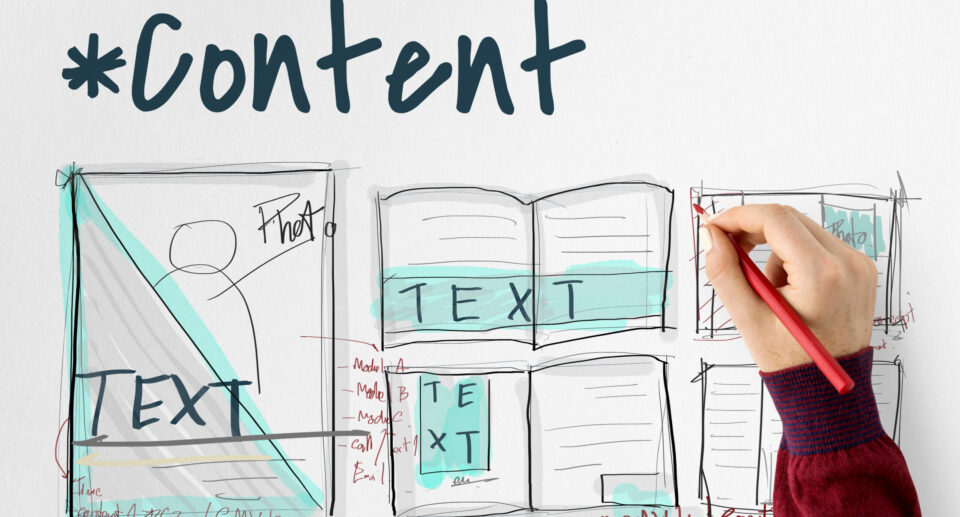How to Use AI for Content Creation

In today’s digital era, content creation has expanded beyond traditional mediums, integrating technology and innovation at its core. One of the most transformative forces driving this change is artificial intelligence. With the advent of advanced algorithms and deep learning models, AI has permeated various industries, and the realm of content creation is no exception. From crafting articles to strategizing content, AI tools are empowering creators, optimizing processes, and delivering value in unparalleled ways. This guide delves into the multifaceted applications of AI, exploring how this technology is reshaping the landscape of content creation.
Writing and Copywriting
The written word, an age-old form of expression, is undergoing a revolutionary transformation with the advent of artificial intelligence. From drafting initial content to enhancing the final piece, AI offers an array of tools to make the writing process more efficient and refined.
- Text Generators: Using cutting-edge algorithms, text generators craft everything from brief ideas to full-length articles based on user prompts. Tools like OpenAI’s ChatGPT are perfect for tackling writer’s block, drafting concepts quickly, or seeing new angles on familiar topics.
- Content Enhancement: Every writer values feedback. AI tools, such as Grammarly, act as a diligent editor, pinpointing improvements in grammar, style, and more. Make these a staple in your workflow for flawless writing.
- Content Ideas: In a saturated content world, standing out is vital. AI aids by spotlighting trending topics and buzzworthy keywords. Turn to these tools for fresh topic brainstorming, gauging content viability, or analyzing what’s hot in your niche.
While AI offers numerous advantages, it’s crucial to remember that true content originality and emotional depth stem from human experiences and insights. Use AI as a collaborative tool – let it handle the heavy lifting of initial drafts or error-checking, but always infuse the final piece with your unique voice and perspective.
Video Production
Video content, a dominant form of digital expression today, demands a blend of storytelling, visual appeal, and auditory engagement. AI, with its myriad of tools and applications, is playing a pivotal role in streamlining video production processes, making them more efficient and innovative.
- Editing: Turning raw footage into captivating stories is now easier and more efficient. AI streamlines video editing, making it a breeze for YouTubers, marketers, and anyone keen to craft stellar videos without delving deep into technicalities.
- Transcription and Subtitles: In our global digital village, every video should speak to everyone. AI tools, like Rev, aid in adding transcriptions and subtitles, ensuring content is accessible across linguistic barriers. Whether you’re an educator, business, or content creator, AI video production tools can make your videos universally engaging.
While AI tools in video production can significantly enhance efficiency and output quality, it’s the human touch that ensures the content truly resonates. After leveraging AI for editing or other production processes, it’s a good idea to gather feedback from real viewers. Their insights will help fine-tune your content, ensuring it not only looks and sounds professional but also strikes a chord with your intended audience.
Web and UI/UX Design
The world of web and UI/UX design is always evolving, striving to offer users the most intuitive and pleasing digital experiences. With AI stepping into the arena, designers have a new suite of tools that can help them create websites and applications that are not only aesthetically pleasing but also deeply user-centric.
- Website Builders: Beyond traditional drag-and-drop, AI enhances website builders by suggesting and adapting designs based on user preferences. This is a boon for small business owners, bloggers, or anyone wanting a sleek online presence without diving deep into design intricacies.
- Optimizing User Experience: In today’s digital age, understanding user behavior is key. AI tools, like Hotjar, analyze user interactions, gifting designers, product managers, and developers with invaluable insights. This data becomes the bedrock for designs that truly resonate with user needs.
The digital landscape is dynamic, with user preferences and behaviors continually evolving. While AI provides powerful analytics and insights, it’s essential to remember the irreplaceable value of human review. By blending AI-driven data with direct user feedback, designers can ensure their creations are not only data-informed but also user-centric.
Interactive Content
Interactive content, such as a chat service on a website, aims to captivate users, drawing them into a dynamic and engaging experience. The integration of AI in this space is enhancing user engagement, offering tailored interactions, and opening avenues for richer content experiences.
- Chatbots: These AI assistants answer questions, provide info, and guide users on websites. They’re especially valuable for e-commerce, service providers, and SaaS platforms, driving user engagement and increasing conversions.
While AI-driven chatbots enhance user interactions, it’s vital to ensure a balance between automation and human touch. In the case of chatbots, always have a system where complex or unresolved queries get redirected to a human representative.
Content Planning and Strategy
In the vast digital landscape, content creators and marketers are constantly juggling the need to produce engaging content while also ensuring it reaches the desired audience and achieves its intended objectives. AI has emerged as a crucial resource in this endeavor, offering actionable insights and helping strategists make informed decisions.
- Performance Analysis: Understanding content performance is pivotal. AI doesn’t just gather data on engagement and conversions; it deciphers it. Tools like HubSpot provide real-time feedback, empowering creators to tweak strategies on-the-go for maximum impact.
- Trend Forecasting: Spotting the “next big thing” can set creators apart. AI scours the internet, pinpointing budding trends. For those in dynamic industries like fashion or tech, Google Trends offers foresight, helping craft content that’s a step ahead.
Relying solely on AI analytics can be tempting given the precision and vast data it offers. However, it’s essential to combine these insights with human intuition and understanding. Periodically sit down with your team to discuss AI-generated data, but also consider anecdotal feedback, direct audience interactions, and broader cultural contexts.
Translation
In an increasingly globalized world, the need for content to transcend linguistic barriers is paramount. As businesses and creators aim to reach wider audiences, effective translation becomes crucial. AI-powered tools are playing an instrumental role in this endeavor, offering quick and efficient translations.
- AI-Powered Translation: Traditional translations, though precise, can lag. AI swoops in, offering lightning-fast, expansive translations. This is a game-changer, whether you’re a blogger aiming for global reach or a corporation communicating across borders.
While AI-driven translation tools offer speed and efficiency, they are not infallible. Linguistic nuances, cultural contexts, idiomatic expressions, and local slang can sometimes be misinterpreted or lost in machine translation. Where possible, have AI-made content reviewed by a native speaker or a professional translator, especially for official documents, major marketing campaigns, or any content that aims to deeply resonate with its audience.
Voice Synthesis
The realm of audio content, encompassing podcasts, voice-overs, and more, relies heavily on genuine human emotion and tone to captivate listeners. With the advent of AI-driven voice synthesis, there’s a transformative shift taking place, offering creators a new toolkit.
- AI-Driven Voices: This tech crafts speech that’s strikingly human-like. Tools like ElevenLabs can allow podcasters to effortlessly tweak content post-recording, animators to bypass repeated voice-over sessions, and businesses to get consistent narration for ads or interactive voice response (IVR) systems.
If you’re venturing into the use of synthetic voices, always strive for a balance. While AI-generated voice content can be incredibly efficient and offers a consistent tone, consider blending it with genuine human narration. This approach ensures you harness the efficiency of AI while preserving the authenticity and emotional depth that listeners value.
Tips for Ethical and Effective AI Integration in Content Creation
The inclusion of AI in the content creation landscape offers a plethora of benefits, from efficiency gains to innovative output. However, with these advantages come responsibilities. Ensuring quality, ethical integrity, and staying updated are important. Here’s a closer look:
- Human Oversight: AI, while sophisticated, can’t always capture the nuanced understanding, emotions, and intentions inherent to human creators. It operates based on algorithms and patterns, which means it can sometimes produce content that might be technically correct but lacks context or emotional resonance. After using AI tools to draft, design, or edit content, always involve human review in the final stages. A human eye can catch subtle errors, misinterpretations, or areas of potential improvement that an AI might miss.
- Ethical Considerations: With the ability to generate hyper-realistic videos (deepfakes) or voices, there’s potential for misinformation or deceptive practices. Additionally, the issue of AI-generated artwork is heavily debated. Since machines lack emotions, experiences, and intent (and the AI often pulls inspiration from various, uncredited artists), the authenticity, originality, and ethics of the art they produce is questioned. Always use these technologies responsibly and avoid creating content that could mislead or harm individuals or communities.
- Continuous Learning: The field of AI is dynamic, with models, algorithms, and tools continuously improving and evolving. What might be state-of-the-art today could become obsolete in a short span. Make it a practice to invest time in understanding the changes, new features, and any shifts in the capabilities of the tools you use. Continual learning ensures you harness the full potential of AI tools, always producing content that meets current standards.
As we stand on the cusp of a new age in content creation, it’s evident that AI has secured its position as a cornerstone of innovation. These tools, with their ability to analyze, generate, and enhance, are not just elevating the quality of content but are also democratizing access, enabling more people to become creators. However, it’s crucial to remember that while AI can streamline and augment our creative processes, the essence of authentic content will always stem from human insight, emotion, and perspective. As we harness the power of AI, we must strive to strike a balance, ensuring that technology serves as an extension of our creativity, not its replacement. Embracing AI while upholding the human touch will pave the way for a richer, more diverse content ecosystem in the future.
Want to learn more about using AI for content creation? Explore what Simple has to offer today.





